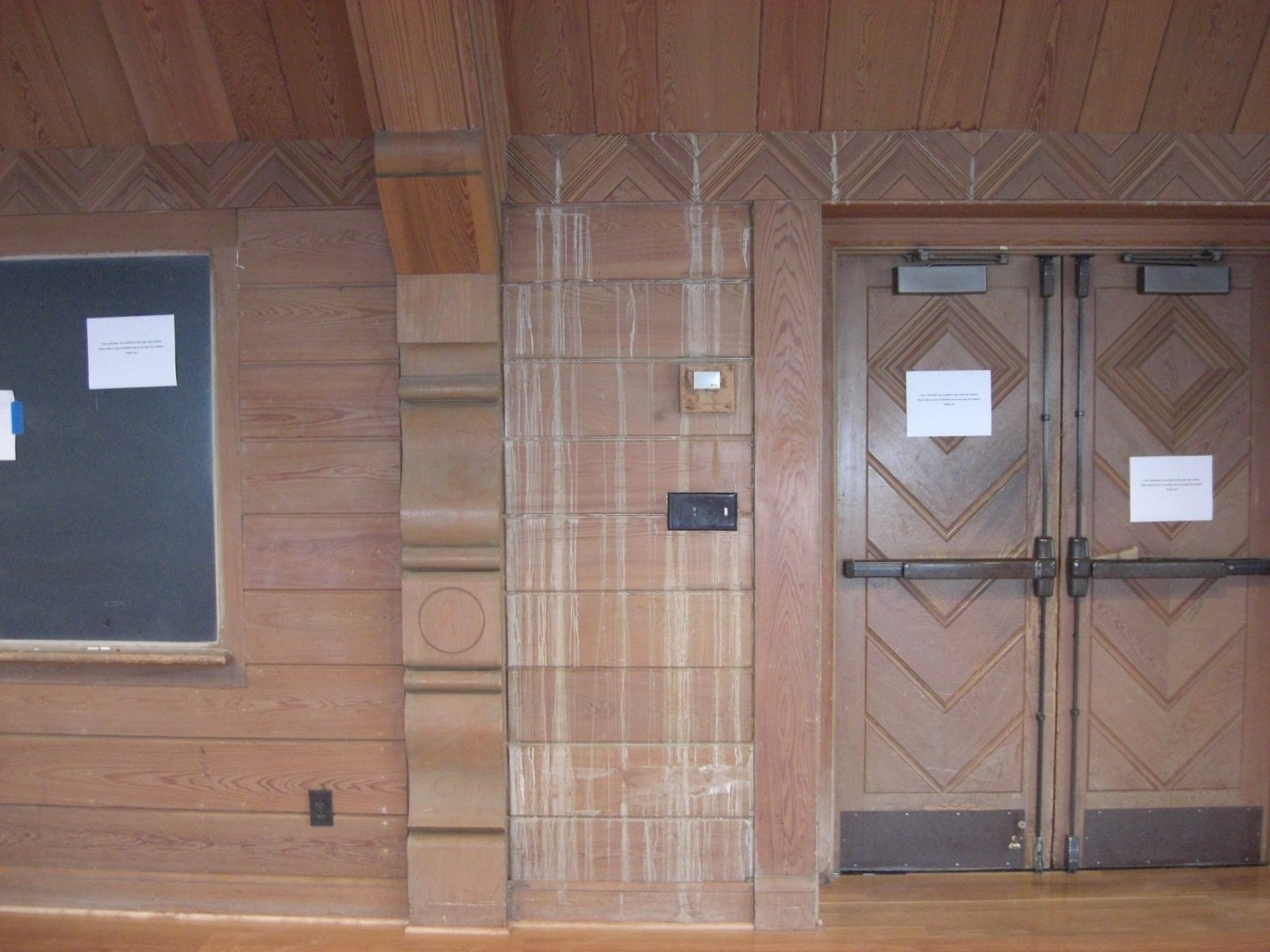Removing Masonry Lime Stains from Wood
Cleaning up lime stains on old woodwork. December 14, 2009
Question
I have some cedar paneling with a 40's era finish. Due to roof leaks I have what I believe are stains from plaster or the masonry block walls. Can somebody assist a carpenter on how to possibly lessen them or remove completely without replacing the boards or sanding to bare wood?
Forum Responses
(Finishing Forum)
From contributor G:
The quick method of getting your answer is to dab some Javex bleach on one of the stains. If it bleaches out, you have a chance. Report back with a description (interior or exterior, little or lots, what color are they) of the situation and include pics if you can. Somebody will guide you through the steps using a more appropriate wood bleach.
From the original questioner:
The stains are on an interior wall and white in color. I believe they are caused by lime. Here is a picture of the wall stain that I'm dealing with.

Click here for higher quality, full size image
From contributor C:
You're defiantly going to have to strip those and refinish them. You could try some steel wool and a product called antique furniture refinisher. It is mostly acetone so it might take some finish off but I think that is inevitable. You can get both at Home Depot or Lowes I believe.
From contributor G:
The picture definitely helps. I had something entirely different in mind. I'd start with CLR and a Scotchbrite pad. They might wipe right off. White vinegar may be worth a try too.
From contributor R:
I had a similar situation years ago. I tried every solvent under the sun to remove the lime. My dad was watching the whole process and kept snickering under his breath. The more we worked the more frustrated we became. Finally he couldn't take it anymore and said "think about what dissolved the lime in the first place - water. That should dissolve it again." I thought no way since we tried the most powerful stuff that man has created, but finally decided to give in. We used soft rags and plain old H2O. The lime came off like a dream and the finish was intact.
From the original questioner:
It's amazing how sometimes we can overthink a problem. Contributor R I''ll try your solution first.
From contributor S:
You might try a steamer.
From the original questioner:
What is the theory behind the steamer?
From contributor D:
I used to be a mason, now I'm a wood finisher. I would try and wash with muratic acid and water - very light on the acid really diluted down mix. Wet the wall first and put on the mixture with a soft bristle brush keep the wall wet it will come right off. Wash the wall thoroughly, and dry immediately after cleaned. Touch up what is needed.
From contributor K:
Don't use acetone or thinner - maybe mineral spirits or something that won’t strip the wood you won’t need to refinish the whole wall if you try the light acid wash. I've dealt with this before.
From the original questioner:
Just an update on my project. I tried contributor R's method and found out whatever type of varnish is on the paneling it's very soft. Water and a cloth cuts it. I found that the stain has penetrated the wood. I haven't had the chance to try other methods but thanks for the good advice.
From contributor A:
Sorry to hear that. I doubt that the varnish is that fugitive anywhere but where the lime streaks are. The reason it did that is the lime has a high pH (very alkaline) and when allowed to remain on a coating for a period of time it can saponify, thus causing the coating to become water soluble. Nothing you can do to reverse it now, so proceed to remove all that will come off.
You are probably left with mineral stains on the wood itself which should respond well to a hot saturate solution of oxalic acid in distilled water. Apply as many times as needed to remove the discoloration (allow it to work overnight) and rinse very well with distilled water (you want all remaining OA crystals removed before any sanding, it's toxic). If you lose too much color from the wood you can use a water dye or potassium dichromate to tweak the color back and then apply new varnish as needed.
